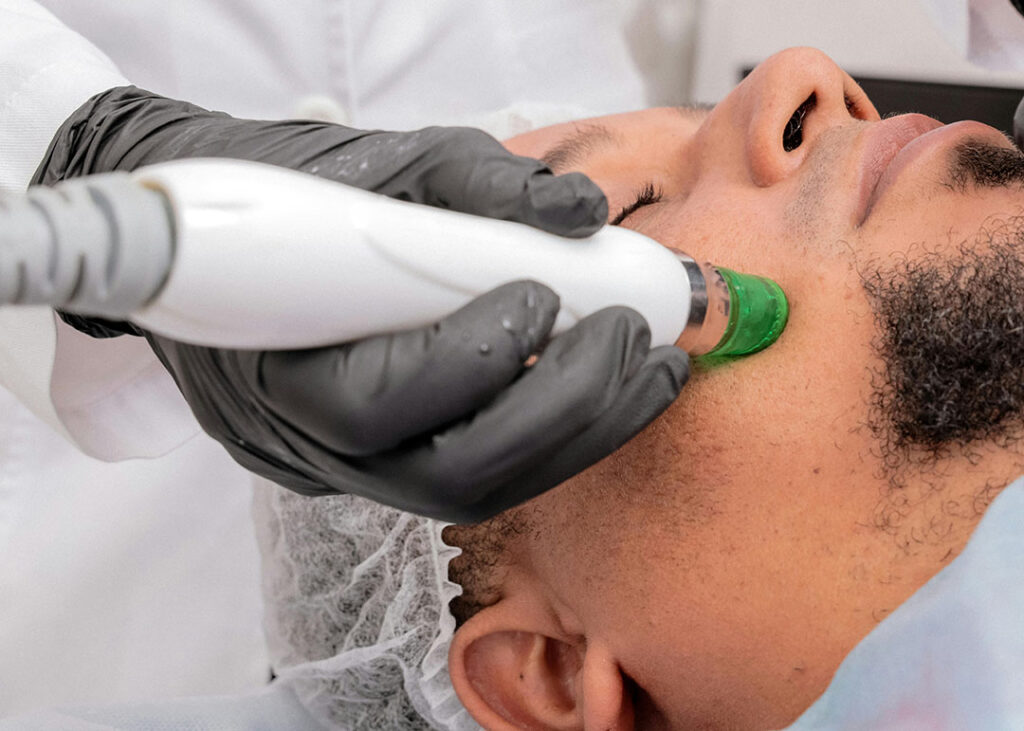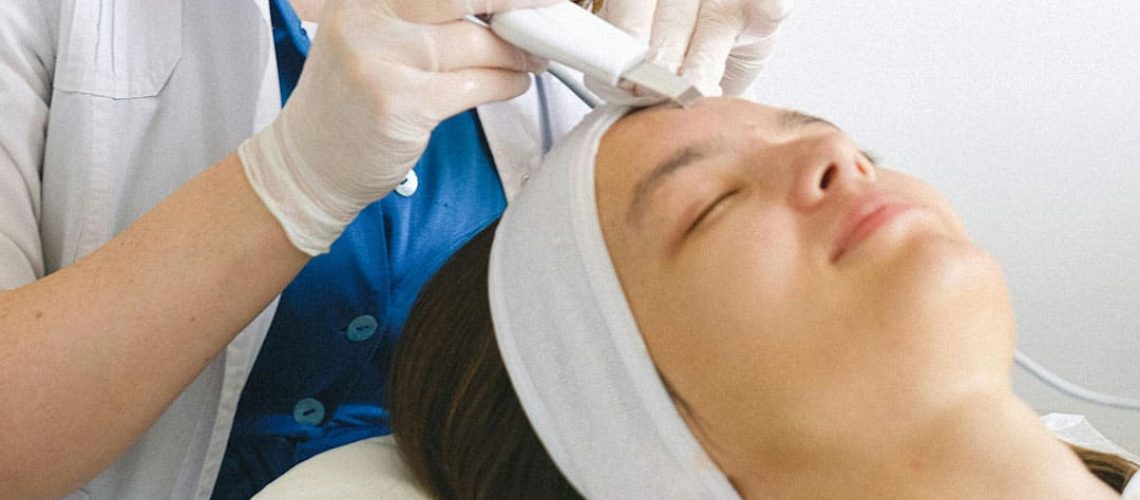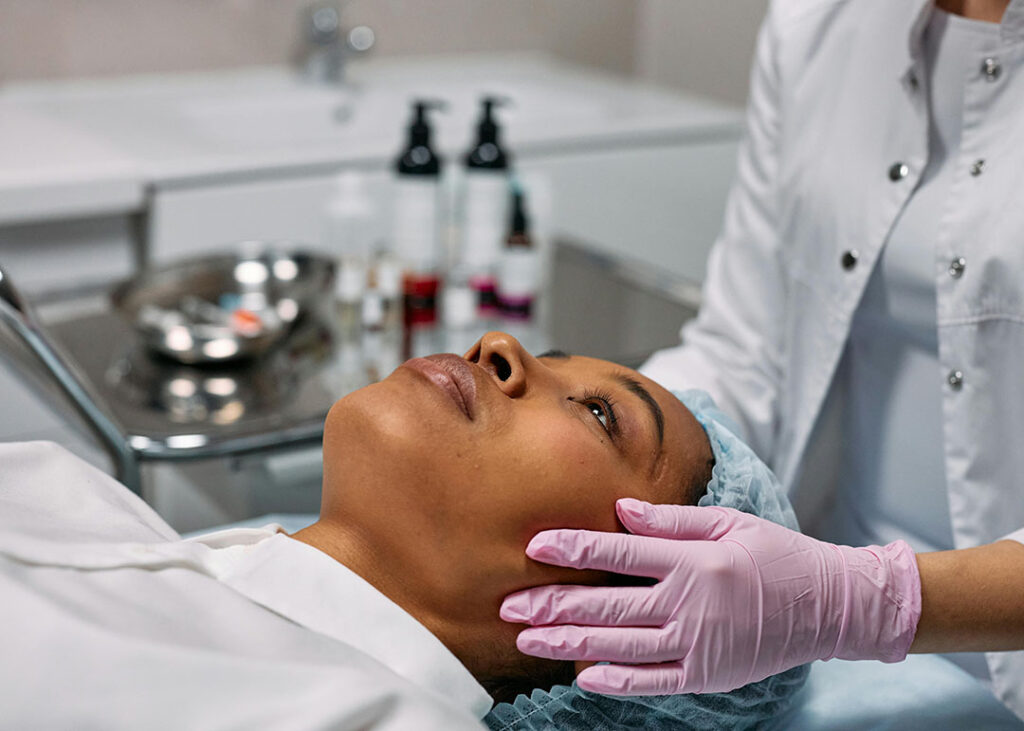If you’ve ever dealt with ingrown hairs, you know how frustrating they can be. They often lead to irritation, redness, and bumps, making your skin feel uncomfortable and look uneven. For those who have tried every remedy and are still struggling, micro-needling may be the solution you’ve been searching for. But does micro-needling really work for ingrown hairs? The short answer is yes—and here’s why it can also help minimize discomfort.
What is Micro-Needling?
Micro-needling, also known as collagen induction therapy, involves using a specialized device equipped with tiny needles to create microscopic holes in the skin. These small punctures may sound intimidating, but they are the key to triggering your body’s natural healing response. As the skin heals, it produces more collagen and elastin, leading to smoother, firmer skin.
After micro-needling, some clinicians may apply biological agents like hyaluronic acid (HA) to enhance skin hydration and promote better absorption of topical products. The result? Enhanced skin texture, reduced wrinkles, improved skin volume, and a significant reduction in acne scarring. But when it comes to ingrown hairs, the benefits of micro-needling go even further.
What is Micro-needling and How Does it Help with Ingrown Hairs?
Micro-needling offers a minimally invasive solution to a wide range of skin concerns, and ingrown hairs are no exception. When those tiny needles create micro-injuries in your skin, the process stimulates collagen production and cell turnover. This natural healing response helps your skin to renew itself, which can reduce the appearance of ingrown hairs, scars, and bumps.
Micro-needling not only addresses existing ingrown hairs but also helps prevent new ones from forming. By improving the overall texture of your skin and reducing inflammation, the process can help hair follicles grow in the correct direction, minimizing the likelihood of ingrown hairs. Additionally, the increase in collagen production supports healthy skin, making it more resilient against future issues.
Beyond ingrown hairs, micro-needling is known to help reduce acne scars, dark spots, and hyperpigmentation, all of which are often associated with ingrown hairs. Incorporating mulberry leaf extracts in skin treatments can further enhance these benefits by reducing the appearance of dark spots and post-inflammatory hyperpigmentation. It’s a comprehensive solution for those looking to improve their skin texture and tone.

Benefits of Micro-Needling for Ingrown Hairs and Acne Scars
Micro-needling offers numerous benefits for anyone dealing with ingrown hairs, including:
Reduces Inflammation: Micro-needling soothes the inflamed skin around ingrown hairs, helping to calm irritation.
Prevents Future Ingrown Hairs: By promoting better skin texture, micro-needling reduces the likelihood of hairs becoming trapped under the surface.
Improves Skin Tone and Texture: The boost in collagen helps to smooth out rough patches and uneven skin tones, making your skin look healthier and more radiant.
Minimizes Discomfort: Micro-needling reduces the redness and irritation commonly caused by ingrown hairs, making your skin feel more comfortable.
Supports Other Treatments: Micro-needling works well with other aesthetic treatments like laser hair removal, helping to optimize your overall results.
Stimulates Collagen Production: Collagen helps improve skin elasticity and firmness, making your skin more resilient and less prone to future ingrown hairs.
How Micro-Needling Compares to Other Treatments
Micro-needling is a popular skin-rejuvenation procedure that has gained significant attention in recent years. But how does it compare to other treatments? In this section, we’ll explore the differences between micro-needling and other common skin treatments.
Micro-Needling vs. Chemical Peels
Chemical peels are a well-known treatment for skin rejuvenation, but they can sometimes be harsh on the skin. Micro-needling, on the other hand, is a gentler, non-invasive treatment that stimulates collagen production without causing significant downtime. While chemical peels are effective for addressing surface-level skin concerns, micro-needling excels in treating deeper issues such as acne scars and fine lines. The tiny needles used in micro-needling create micro-injuries that promote natural healing and collagen production, making it a more comprehensive solution for long-term skin health.
Micro-Needling vs. Laser Hair Removal
Laser hair removal is a popular choice for those looking to eliminate unwanted hair, but it isn’t always effective for everyone. Micro-needling, however, offers a different set of benefits. It helps to visibly reduce ingrown hairs and improve overall skin tone. While laser hair removal provides a more permanent solution for hair removal, micro-needling addresses the skin concerns that often accompany ingrown hairs, such as inflammation and uneven texture. This makes micro-needling a valuable complementary treatment for those undergoing laser hair removal.
Micro-Needling vs. Collagen Induction Therapy
Collagen induction therapy is essentially another term for micro-needling, as both treatments involve using tiny needles to stimulate collagen production. However, micro-needling is often considered a more comprehensive treatment because it addresses a broader range of skin concerns, including acne scars, fine lines, and uneven skin tone. Collagen induction therapy focuses specifically on boosting collagen.
The Micro-Needling Process with Tiny Needles
Micro-needling is a straightforward procedure, but understanding the process can help you feel more comfortable going in. Here’s what you can expect:
Preparation: Before the procedure, your clinician may apply a topical anesthetic to minimize any discomfort. Soothing ingredients like aloe barbadensis leaf juice may be used to prepare your skin and reduce irritation. This ensures that the treatment is as painless as possible.
The Treatment: Using a specialized micro-needling pen, your practitioner will glide the device over the affected areas of your skin, creating tiny micro-injuries. These controlled injuries signal your body to kick-start its healing process.
Time: A typical micro-needling session takes between 30-60 minutes, depending on the size of the area being treated.
Multiple Sessions: Depending on the severity of your ingrown hairs and your skin goals, you may need multiple sessions to achieve the best results.
Pre- and Post-Treatment Care for Optimal Results
To get the most out of your micro-needling treatment, it’s important to follow both pre- and post-treatment care instructions:
Before Treatment:
Avoid waxing, tweezing, or using harsh exfoliants for at least two weeks before your session. This ensures that your skin is in its best condition for treatment. Avoid direct sun exposure in the week leading up to your appointment, as sunburned skin can complicate the micro-needling process.
After Treatment:
Use gentle skincare products like aloe vera or hyaluronic acid to hydrate and soothe your skin. To prevent infection and help your skin heal, apply topical creams or serums with anti-inflammatory ingredients like tea tree oil, camellia sinensis leaf extract, or sophora flavescens root extract. Stay out of the sun for a few days after your treatment and apply broad-spectrum sunscreen (SPF 30 or higher) when you go outside.
Potential Risks and Complications
As with any cosmetic treatment, there are some risks involved, but micro-needling is generally considered safe when performed by a qualified professional. Some temporary side effects include:
Redness and Swelling: Mild redness and swelling are common and usually subside within a few days.
Bruising: While rare, minor bruising can occur.
Infection or Scarring: These are very rare but can happen if post-treatment care instructions aren’t followed properly.
To minimize these risks, always choose a qualified and experienced practitioner.
Results and Maintenance
Many people begin to see results after just one micro-needling session. However, for more significant concerns—like frequent ingrown hairs or deep scarring—multiple sessions may be required. Depending on your skin and your goals, your clinician will recommend a treatment plan tailored to you.
To maintain the results, you may choose to have maintenance treatments every 4-6 weeks. Regular sessions help to keep collagen production high and prevent future ingrown hairs from forming. If you combine micro-needling with treatments like laser hair removal, you’ll likely see even longer-lasting results.
Is Micro-Needling Right for You?
Micro-needling is suitable for most skin types and tones, even sensitive skin. However, it’s important to consult with a trained professional to ensure it’s the right treatment for you. If you struggle with ingrown hairs, uneven skin texture, or post-inflammatory hyperpigmentation, micro-needling could be an excellent solution.
Micro-needling is an effective and minimally invasive treatment that can help reduce ingrown hairs, improve skin texture, and boost your skin’s natural collagen production. By understanding the benefits, process, and aftercare involved, you can decide if this treatment is right for you.
At Oral Facial Surgical Arts, we offer professional micro-needling services tailored to your specific needs. Whether you’re looking to reduce ingrown hairs or improve your overall skin health, we’re here to help you achieve the results you’re looking for. Ready to say goodbye to ingrown hairs and hello to smoother, healthier skin? Contact us today to schedule your consultation.



